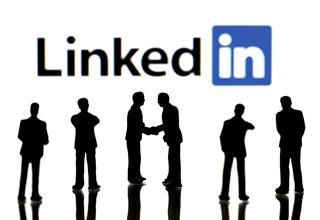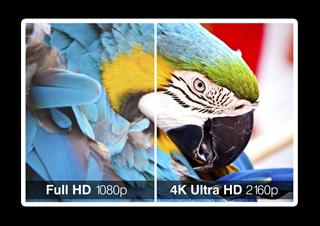
Stealth marketing is a secret marketing style. To say the least, it does not give the impression that an advertising technique is being carried out. MarketingWit provides you with a detailed explanation of stealth marketing with examples.
The Launchpad
Sony Ericsson was one of the first companies to launch the concept of stealth marketing via a marketing initiative called Fake Tourist. The campaign used actors to use the common public to launch phone cameras that were a novelty back in 2002.
Marketing is a very important phase of business. The business cycle works like this―product planning, designing, development, testing, and then marketing. If the last phase is not implemented successfully, the entire development process will have gone in vain. Hence, companies come up with newer and more innovative strategies of advertising the product and circulating the same amidst the general public. Stealth marketing is one such advertising technique, developed more than a decade back. Unlike traditional methods, where one is at least aware that a product is being advertised (print media, like newspapers, magazines, billboards, etc., and tele-media, like radio and television), stealth marketing concentrates on secret advertising, i.e., no one would even know that the product is being advertised. The following paragraphs elaborate further on the practice of stealth marketing.
An Overview
- Many consumers actually wonder if stealth marketing is real or just a myth. Well, to eliminate your doubts, yes, it is indeed real.
- Also called undercover/buzz marketing, it is a tactic to let customers know about the product before it has been officially launched.
- As mentioned in the beginning, Sony Ericsson was one of the first companies that used stealth marketing.
- In order to launch their product labeled ‘T68i’, they had actors pose as regular tourists.
- These ‘tourists’ went around the city, asking passers-by to take their pictures, using the phone camera of the brand new T68i. Mind you, the public had no idea of this product before.
- As the public interest was aroused, the actors/tourists displayed the product like a trophy, explaining its features, attracting a wider audience and encouraging them to buy the product, which was the sole purpose of the campaign. The company intended to spread this news as far as possible so that everybody would know about the phone and its unique characteristics.
- The campaign gained a widespread response, while the product enjoyed a massive sale worldwide.
- While this is just one technique, there are other strategies used these days, as companies surreptitiously compete with each other to be the best.
Types
Some of the types of stealth marketing are given below:
Using Actors
- The technique dates back to the one Sony Ericsson had used first―having actors pose as regular people for product promotion.
- As of today, companies hire a bulk of actors and group them into twos and threes.
- These groups travel around the city, attracting the general public towards the product in some way or the other.
- They spread word about the product features, unique traits, etc., and remember, all this is done without the actors revealing their identity. This is one of the strong reasons why some consumers consider this practice as illegal.
- This campaign may be carried out for a few days/a week, until the company finds out that the product has been sufficiently advertised.
- Similar to this method, the company also hires actors and sends them to huge organizations, to indulge the people present there into a conversation regarding the product.
- The conversation is scripted, and the people have no idea who these actors are, nor do they know what their purpose is.
Video Releases
- Videos featuring the product are made to look like press releases, when in reality, the products are being advertised on television as well as online channels.
- The people appearing in the videos may or may not be actual artists; however, the videos are released nevertheless.
- It may be possible that one of the marketers has been posing as a broadcaster as well.
Social Networking Sites
- Using social networking sites is the most common, widely used method of advertising.
- The products are widely launched all over online channels, blogs, websites, etc., and the company makes sure it establishes itself as a well-known organization.
- This technique is ideally a part of traditional advertising as well, if only the promotion would have taken place after the official statement from the company.
- Prior to the launch, the company hires advertisers to spread word about the product so that when it is officially promoted, people look forward to the same.
Product Display
- Product display is again a tactic used in traditional marketing; products are prominently displayed on television and other media.
- Buzz marketing, however, has been using this technique in a different way.
- Companies display their products in important locations, i.e., perhaps ads are placed in fake newsletters in a prominent neighborhood, or products are distributed with the company tag, etc.
Advantages
Undercover marketing has its own pros and cons; some of its advantages are given below.
♦ One of the primary advantages is the low cost. This technique requires less money, i.e., a part of the marketing funds are spent on the initial phase. Once the product has been well-publicized, the other advertising strategies can be considerably lesser, thereby, saving funds.
♦ Another advantage is the product popularity. The product is famous even before it is launched; thus, it is well-known within a short time―at a considerably faster speed than regular advertising. Also, as the product is being discussed in public forums and peer-to-peer communication, the popularity reaches a global audience.
♦ Launching the product is easier and beneficial using buzz marketing. It is easier to plan and execute.
♦ Some companies use channel management for a target audience. Through this technique, people apart from the target audience are also aware of the product.
♦ If done effectively, the company’s name and reputation develop greatly.
♦ It generates general local interest and spreads knowledge about the product. There is a consistency is sales as well.
Disadvantages
Buzz marketing has certain disadvantages as well, which are given below:
♦ Negative reviews may very well destroy the image of a company.
♦ Making use of false news to advertise leads to customers losing trust in the brand, and if customers are lost, the company is left nowhere.
♦ Once the buzz campaign begins, it is difficult to stop the same, even if the negative effects are unearthed and analyzed. The damage may have been done already.
♦ If your strategy is not planned properly, the public will pay no attention to the product. The company may have to spend an additional amount for further marketing.
♦ The market is tough out there, and there is a likelihood that your competitors may destroy your buzz campaign. That way, your product will lose face before it is launched.
♦ Any kind of negative buzz spreads faster, and if there is a human error in the marketing process, it cannot be easily rectified. If the company is unable to meet the public demands after the buzz has been created, it may lose face.
Examples
The following stealth marketing examples will help you understand the concept even better.
♦ A certain kitchenware company may pay a cooking channel to use their products―the wok, ladles, saucepans, etc.
♦ A small-scale clothing store may have television actors wear their clothes.
♦ Advertising beer by sending beer bottles to bars with the company tag is a fairly common tactic.
♦ Paying a movie company to have their actors smoke a particular brand of cigarette is another gimmick.
♦ Spreading false rumors about movie actors to entice the audience to watch the movie is a familiar strategy.
♦ Publishing phony ads in fake newspapers and distributing them in neighborhoods works as well.
♦ Giving away product samples at local exhibitions or fairs helps.
♦ Melodramatic movie promotions are done to attract public attention.
♦ A cosmetic company may pay an actor to wear their brand of cosmetic.
♦ A beverage company may provide its brand of beverage with free cups bearing the company’s logo to local coffee houses.
♦ An automobile company uses posters advertising its cars in local car dealerships.
♦ An electronics company may pay a local channel and have its own marketers advertise their brand of a washing machine or refrigerator.
Some Vital Points to Consider
- The debate of whether stealth marketing is ethical or not has been going on for quite a while now. This kind of argument is based on perspective.
- Believe it or not, there are certain ethics of stealth marketing as well. Certain methodologies are forbidden to be used in the name of product promotion.
- While this technique is used by many large companies, recently, many smaller companies have followed suit, to generate public interest in newly developed products.
- A reasonable standard needs to be applied in order to maintain marketing integrity.
- Consumers may or may not understand the intent behind the advertising gimmick, and as long as it does not break the laws, companies may follow the same.
- For instance, spreading rumors about a movie to increase its ticket sales, following scripted melodrama to increase television ratings, etc., are all stealth marketing, and even though it may generate interest/annoyance, technically, no rule is broken.
- It is totally up to the producers/marketers to make use of the promotional methods in the right way, without overstepping the line.
Stealth marketing has proved to be quite beneficial for companies. All the same, the negative effects cannot be nullified either. In a nutshell, you need to keep the usage of that tactic to a minimum, ensuring that it does not violate any law. Ideally, many still consider it unethical to promote the product without letting the motive out; therefore, the company needs to formulate certain strategies that make use of the undercover marketing technique without offending the customer, and at the same time, ensure that the reputation of the company is not tarnished.






